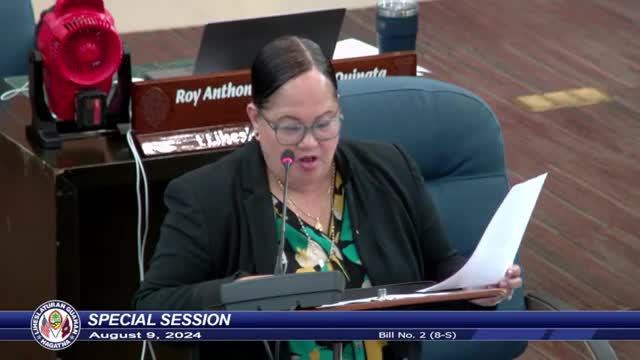Controversial education bill sparks heated debate in Guam
August 09, 2024 | General Government Operations and Appropriations , Legislative, Guam
This article was created by AI summarizing key points discussed. AI makes mistakes, so for full details and context, please refer to the video of the full meeting. Please report any errors so we can fix them. Report an error »

In a recent government meeting, significant discussions centered around the proposed transfer of authority over the Guam Department of Education (GDOE) to the governor, known locally as the Maga'haga. The proposal aims to streamline operations and address delays in school openings, but it has sparked considerable debate among lawmakers regarding the extent of power that should be granted to the governor.
Key points of contention included the unilateral authority to hire and fire GDOE personnel, the selection of the superintendent of education, and control over federal funds. One senator expressed strong opposition to granting the governor such sweeping powers, arguing that it undermines the elected Guam Education Board and could lead to a concentration of authority that is not in the best interest of the educational system. The senator emphasized the importance of maintaining checks and balances, particularly in light of past issues with federal funding.
Another senator supported the amendments aimed at limiting the governor's authority, asserting that the intent of the legislation should focus solely on facilitating the reopening of schools rather than enabling a political power grab. This sentiment was echoed by several lawmakers who stressed the need for accountability among elected board members and the importance of community involvement in educational governance.
However, some lawmakers cautioned against the proposed amendments, arguing that they could create conflicts within the legislation and hinder the governor's ability to effectively address educational challenges. They highlighted the governor's commitment to collaborating with the education board and the superintendent to improve school conditions without needing direct control over GDOE.
Ultimately, the proposed amendments to limit the governor's authority were put to a vote but failed to pass, indicating a division among lawmakers on how best to manage the governance of education in Guam. The discussions reflect ongoing concerns about the balance of power in local governance and the implications for the future of education in the territory.
Key points of contention included the unilateral authority to hire and fire GDOE personnel, the selection of the superintendent of education, and control over federal funds. One senator expressed strong opposition to granting the governor such sweeping powers, arguing that it undermines the elected Guam Education Board and could lead to a concentration of authority that is not in the best interest of the educational system. The senator emphasized the importance of maintaining checks and balances, particularly in light of past issues with federal funding.
Another senator supported the amendments aimed at limiting the governor's authority, asserting that the intent of the legislation should focus solely on facilitating the reopening of schools rather than enabling a political power grab. This sentiment was echoed by several lawmakers who stressed the need for accountability among elected board members and the importance of community involvement in educational governance.
However, some lawmakers cautioned against the proposed amendments, arguing that they could create conflicts within the legislation and hinder the governor's ability to effectively address educational challenges. They highlighted the governor's commitment to collaborating with the education board and the superintendent to improve school conditions without needing direct control over GDOE.
Ultimately, the proposed amendments to limit the governor's authority were put to a vote but failed to pass, indicating a division among lawmakers on how best to manage the governance of education in Guam. The discussions reflect ongoing concerns about the balance of power in local governance and the implications for the future of education in the territory.
View full meeting
This article is based on a recent meeting—watch the full video and explore the complete transcript for deeper insights into the discussion.
View full meeting